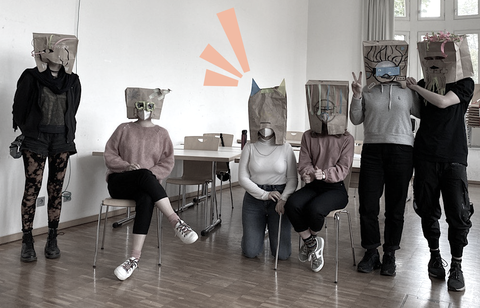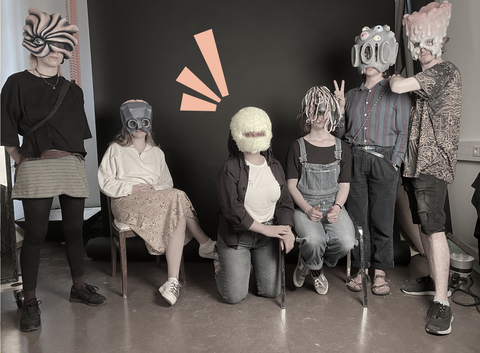Denkhüte 2.0
Die Denkhüte-Methode ist einigen Besucher:innen dieser Seite sicher bereits bekannt. In den 80ern entwickelte Edward de Bono die Methode der sechs Denkhüte, die er selbst als Kreativitätstechnik verstand. De Bono war gar kein politischer Bildner und dennoch wird die Methode heute aufgrund ihres vielfältigen Angebots zum Perspektivenwechsel immer wieder auch in der politischen Bildung eingesetzt.
In einer Gruppe soll eine komplexe Frage bzw. Problemstellung diskutiert werden. Je einer Person oder Kleingruppe wird jedoch ein spezieller Blickwinkel (also ein Denkhut) zugeordnet, aus dem argumentiert werden soll. Vermutlich ist es genau diese Multiperspektivität auf gesellschaftliche, politische bzw. wirtschaftliche Problemstellungen, die die Methode auch für die politische Bildung so interessant macht. Beispielsweise lässt die Methode neben dem rationalen auch den emotionalen Blick zu. Emotionen werden also nicht ausgeblendet, sondern gleichberechtigt besprechbar. Genau für diese Methode haben wir in der JoDDiD-Innovationswerkstatt ein auszuleihendes Material entwickelt:
Welches Material hat die JoDDiD entwickelt?
Wir haben in der JoDDiD große "Maskenhüte" entwickelt, das Sie für die Durchführung der Denkhüte-Methode benutzen können. Denn wir fragen uns, wie es wäre, wenn wir die Methode noch etwas anreichern – und zwar ästhetisch. Was würden z.B. detailreich gestaltete "Hüte" – oder besser Masken – für die Durchführung der Methode verändern? Wenn wir davon ausgehen, dass die Hüte das zentrale Element von de Bonos Methode sind, dann verwundert es eigentlich, dass sie meist durch kleine Partyhüte oder farbige Karteikarten dargestellt werden. Gemeinsam mit der Hochschule für Bildende Künste Dresden haben wir also Denkhüte in Form von Masken entwickelt, die die Perspektive, aus der es zu sprechen gilt, darstellt.
Unseres Erachtens haben auch die Wertigkeit von Materialien sowie Gestaltung von Räumen einen bedeutenden Einfluss auf Lernprozesse. Unsere großen bunten "Maskenhüte" verstärken die jeweilige Rolle/Perspektive und erleichtern darüber hinaus einen Perspektivenwechsel zwischen den Hüten und einen anschließenden Ausstieg aus der Rolle, wenn der Denkhut wieder abgesetzt wird. Für Näheres zur Umsetzung schauen Sie doch einmal in unser HOW TO DENKHÜTE.
Ebenso können Sie unterstützende Namensschilder für die Denkhüte im PDF-Format herunterladen. Diese können sich Ihre Teilnehmenden dann je nach Perspektive z.B. umhängen und erleichtern es so allen, nachzuvollziehen, aus welcher Perspektive gerade gesprochen wird.

Maskenbildstudierende improvisieren zu Beginn des Produktionsprozesses Denkhüte aus Papiertüten
Sie merken schon: in unserem Fall handelt es sich wohl eher um "denkende Köpfe" in Form von Masken als um Hüte. Sie können aufgrund ihres Helmaufsatzes im Inneren problemlos auf den Kopf gesetzt werden. Dann können die Teilnehmenden direkt aus ihnen heraus sprechen und sich in ihren Blickwinkel fast wie in eine Rolle hineinversetzen. Alternativ können die Masken aber auch auf dem Schoß einer Person sitzen oder im Raum verteilt positioniert werden. Diese Variante eignet sich v.a. dann, wenn nicht nur eine Person in der Gruppendiskussion einen der sechs Blickwinkel einnehmen soll, sondern Kleingruppen diese Aufgabe erhalten.
In jedem Fall empfehlen wir eine gemeinsame Annährungsphase an die Denkhüte. Was bedeutet jede Perspektive für die Lösungsfindung? Es bietet sich anschließend an, mit allen Teilnehmenden jeden der ausgeliehenen Denkhüte zu betrachten und gemeinsam erkennbare Details zu sammeln, die für die jeweilige Perspektive sprechen, die der Denkhut einnehmen wird. Also: Welche erkennbaren Merkmale der Maske spricht für ihre Perspektive? Anregungen dazu finden Sie auch in der obigen Bildergalerie. Beispielsweise hat die Strukturierende Augen und Ohren in alle Richtungen, um das Gesagte aller Teilnehmer:innen wahrnehmen und ordnen zu können. Die Verstärkerin ist in flauschigem optimistischem Gelb gestaltet und blickt durch eine rosarote Brille, die sie nur Chancen und Vorteile im Hinblick auf die zu besprechende Problematik sehen lässt. Um sich die Denkhüte 2.0 für die Methode nach de Bono anzueignen, ist es sinnvoll, sich die Zeit zu nehmen, diese Details gemeinsam zu entdecken.

Am Ende des Projekts sind die professionell produzierten "Denkhüte" fertig
Informationen zur Ausleihe
Für politische Bildner:innen in Sachsen ist die Bestellung und der Verleih von Materialien kostenfrei. Alle relevanten Informationen zur Bestellung finden Sie unter Bestellinformationen. Bitte bedenken Sie, dass es sich bei unseren Denkhüten um ein empfindlicheres Material handelt, das sorgfältig behandelt werden soll. Die genauen Ausleihbedingungen erfragen Sie bitte ebenfalls unter unserer Shop-Mail.
Wir freuen wir uns, wenn Sie nach der Durchführung der Denkhüte-Methode zu einem kurzen Telefonat bereit sind, in dem Sie uns von Ihrem Einsatz des Materials und Ihren Eindrücken berichten. Dies hilft uns bei der Entwicklung weiterer JoDDiD-Materialien, die zukünftig wiederum für außerschulische politische Bildner:innen in Sachsen zur Verfügung stehen.














